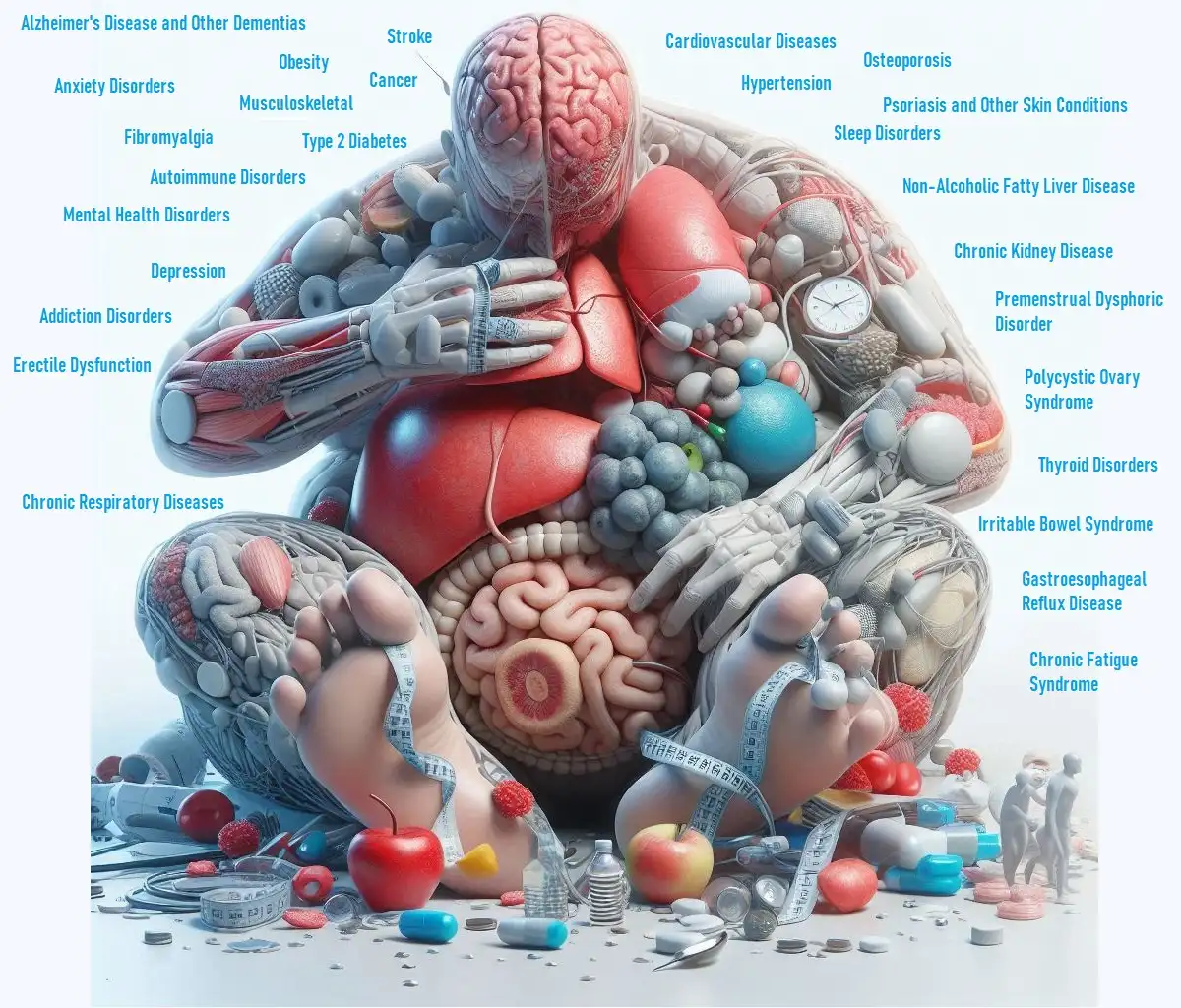
Non-Alcoholic Fatty Liver Disease (NAFLD) is a condition where fat accumulates in the liver without the presence of excessive alcohol use. As NAFLD becomes more prevalent, understanding its connections to type 2 diabetes, liver fibrosis, and the role of physical activity, vitamin E, and the gut microbiome is crucial for effective management and prevention. This article provides a comprehensive look at these factors, offering practical advice for managing and preventing NAFLD.
Key Takeaways
- Type 2 Diabetes and NAFLD: There is a strong link between NAFLD and type 2 diabetes, with one condition often exacerbating the other.
- Vitamin E: This vitamin may help manage NAFLD by reducing liver inflammation and fat.
- Physical Activity: Regular exercise plays a critical role in managing NAFLD and improving liver health.
- Liver Fibrosis: NAFLD can progress to liver fibrosis, a more serious condition that can lead to liver damage.
- Gut Microbiome: The health of your gut microbiome can influence the development and progression of NAFLD.
NAFLD and Type 2 Diabetes
The Connection Between NAFLD and Type 2 Diabetes
NAFLD and type 2 diabetes often go hand in hand. Insulin resistance, a key feature of type 2 diabetes, contributes to fat buildup in the liver, making NAFLD more likely. Conversely, NAFLD can worsen insulin resistance, creating a vicious cycle.
- Shared Risk Factors: Both conditions share common risk factors like obesity, poor diet, and physical inactivity.
- Insulin Resistance: Insulin resistance, where the body’s cells don’t respond properly to insulin, leads to increased liver fat storage.
- Inflammation: Chronic inflammation associated with NAFLD can further disrupt insulin function, exacerbating diabetes.
Managing NAFLD and Type 2 Diabetes
- Balanced Diet: Focus on a diet rich in fiber, lean proteins, and healthy fats. Limit sugars and refined carbs to help manage both conditions.
- Regular Exercise: Engage in regular physical activity to improve insulin sensitivity and reduce liver fat.
- Monitor Health Metrics: Regularly check blood sugar levels and liver health markers with your healthcare provider to manage and adjust treatment as needed.
Role of Vitamin E in NAFLD Management
Benefits of Vitamin E for NAFLD
Vitamin E is an antioxidant that helps reduce oxidative stress and inflammation in the liver. Research suggests that it may benefit individuals with NAFLD, particularly those with non-alcoholic steatohepatitis (NASH).
- Reducing Inflammation: Vitamin E can help reduce liver inflammation, which is a common issue in NAFLD.
- Decreasing Liver Fat: It may also help lower liver fat content, improving overall liver health.
- Preventing Disease Progression: Regular intake of vitamin E might slow the progression of NAFLD to more severe liver conditions.
Incorporating Vitamin E into Your Diet
- Eat Vitamin E-Rich Foods: Include nuts, seeds, spinach, and avocados in your diet to boost vitamin E intake.
- Consider Supplements: If dietary intake is insufficient, vitamin E supplements can be considered, but consult with a healthcare provider before starting any new supplements.
Impact of Physical Activity on NAFLD
How Exercise Helps with NAFLD
Physical activity is one of the most effective ways to manage NAFLD. Exercise helps reduce liver fat, improve insulin sensitivity, and enhance overall liver function.
- Reducing Liver Fat: Regular exercise helps burn off excess fat in the liver and promotes overall fat loss.
- Improving Insulin Sensitivity: Physical activity enhances the body’s response to insulin, which can help manage blood sugar levels and reduce NAFLD symptoms.
- Enhancing Liver Health: Exercise supports liver function and can help prevent the progression of NAFLD to more severe liver conditions.
Tips for Staying Active
- Aim for Consistency: Try to incorporate at least 150 minutes of moderate exercise or 75 minutes of vigorous exercise each week.
- Mix It Up: Combine aerobic exercises, like walking or swimming, with strength training for overall health benefits.
- Find What You Enjoy: Choose activities you enjoy to make exercise a regular part of your routine.
NAFLD and Liver Fibrosis
Understanding Liver Fibrosis
Liver fibrosis is the buildup of scar tissue in the liver caused by long-term liver inflammation and damage. NAFLD can progress to liver fibrosis if not managed properly.
- Progression: Chronic inflammation and fat accumulation in NAFLD can lead to fibrosis, eventually resulting in cirrhosis if untreated.
- Symptoms: Early stages of fibrosis may not show symptoms, but advanced fibrosis can lead to more severe health issues, including liver failure.
Managing and Preventing Liver Fibrosis
- Regular Monitoring: Regular check-ups with your healthcare provider can help monitor liver health and catch any signs of fibrosis early.
- Healthy Lifestyle Choices: Adopt a healthy diet, exercise regularly, and avoid alcohol to reduce the risk of fibrosis.
- Medical Treatment: Follow your doctor’s recommendations for managing NAFLD to prevent progression to fibrosis.
Role of Gut Microbiome in NAFLD Development
How Gut Microbiome Influences NAFLD
The gut microbiome, the community of microorganisms living in your intestines, plays a crucial role in liver health. Imbalances in the gut microbiome can contribute to the development and progression of NAFLD.
- Gut-Liver Axis: The gut microbiome communicates with the liver through the gut-liver axis, influencing liver inflammation and fat accumulation.
- Dysbiosis: An imbalance in the gut microbiome, known as dysbiosis, can lead to increased liver fat and inflammation.
- Microbiome Modulation: Research suggests that modifying the gut microbiome through diet, probiotics, or other interventions may help manage or prevent NAFLD.
Supporting a Healthy Gut Microbiome
- Eat a Fiber-Rich Diet: Include plenty of fruits, vegetables, and whole grains to support a healthy gut microbiome.
- Consider Probiotics: Probiotics can help balance the gut microbiome. Consult with your healthcare provider to determine if they’re right for you.
- Limit Processed Foods: Reduce intake of processed and high-sugar foods that can negatively impact gut health.
Conclusion
Non-Alcoholic Fatty Liver Disease (NAFLD) is a complex condition influenced by various factors including type 2 diabetes, vitamin E levels, physical activity, liver fibrosis, and gut microbiome health. By understanding these connections and adopting a balanced lifestyle, including a healthy diet, regular exercise, and monitoring key health metrics, you can manage and potentially prevent NAFLD. Always consult with healthcare professionals for personalized advice and treatment to ensure optimal liver health and overall well-being.





